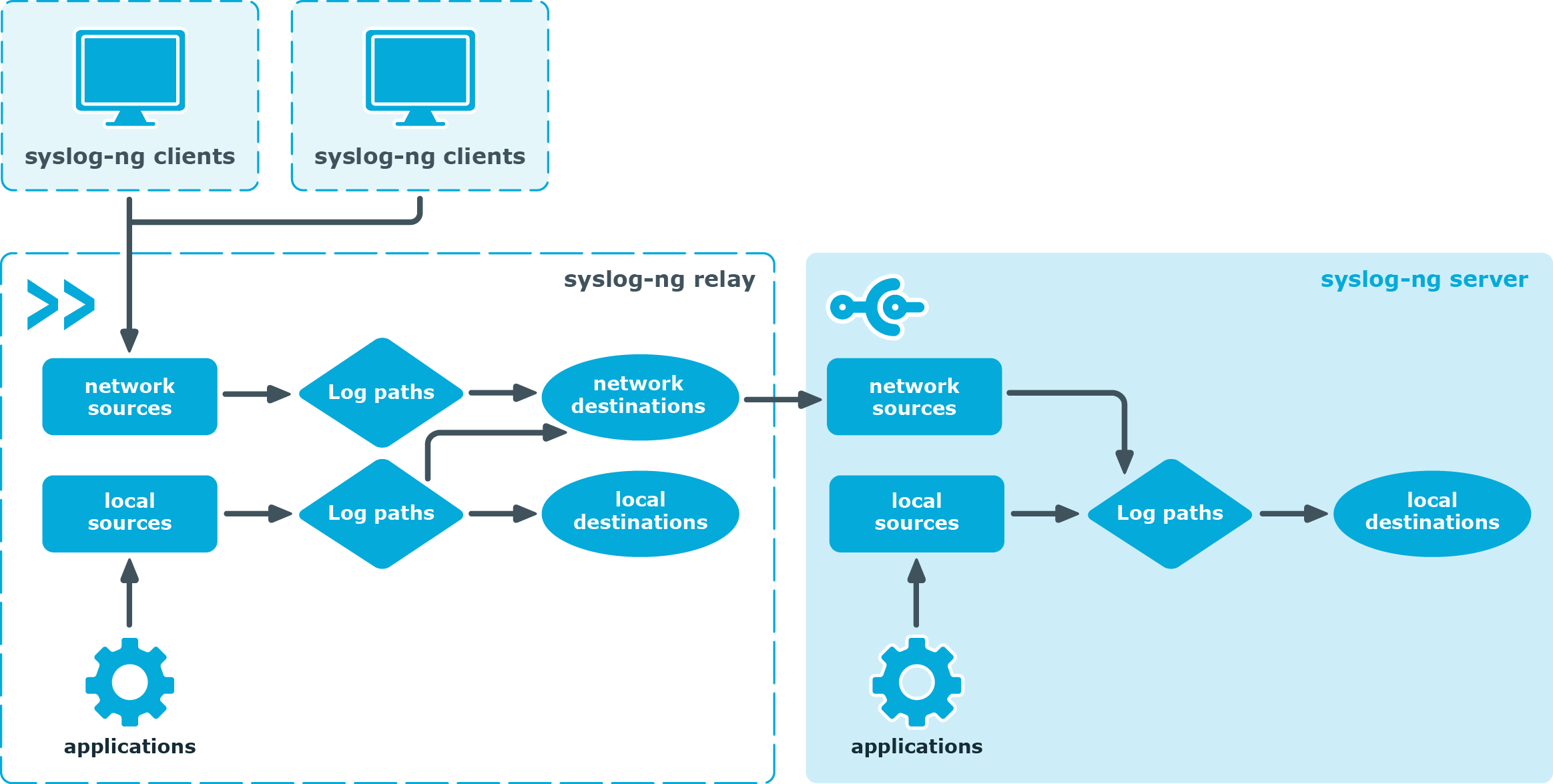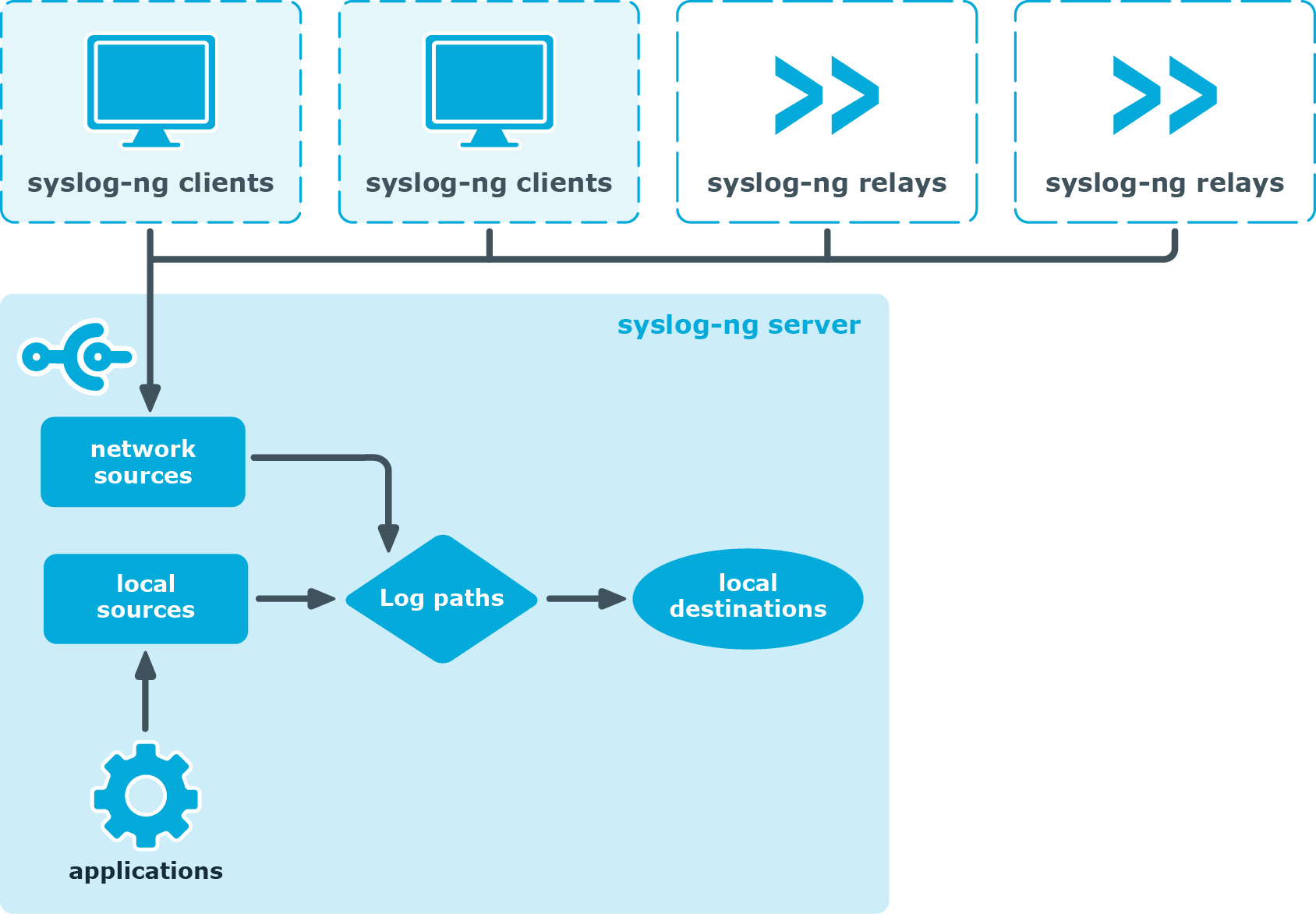Relay mode
Figure 3: Relay-mode operation

In relay mode, syslog-ng receives logs through the network from syslog-ng clients and forwards them to the central syslog-ng server using a network connection. Relays also log the messages from the relay host into a local file, or forward these messages to the central syslog-ng server.
Server mode
Figure 4: Server-mode operation

In server mode, syslog-ng acts as a central log-collecting server. It receives messages from syslog-ng clients and relays over the network, and stores them locally in files, or passes them to other applications, for example log analyzers.
Global objects
The syslog-ng application uses the following objects:
-
Source driver: A communication method used to receive log messages. For example, syslog-ng can receive messages from a remote host via TCP/IP, or read the messages of a local application from a file. For details on source drivers, see source: Read, receive, and collect log messages.
-
Source: A named collection of configured source drivers.
-
Destination driver: A communication method used to send log messages. For example, syslog-ng can send messages to a remote host via TCP/IP, or write the messages into a file or database. For details on destination drivers, see destination: Forward, send, and store log messages.
-
Destination: A named collection of configured destination drivers.
-
Filter: An expression to select messages. For example, a simple filter can select the messages received from a specific host. For details, see Customize message format using macros and templates.
-
Macro: An identifier that refers to a part of the log message. For example, the ${HOST} macro returns the name of the host that sent the message. Macros are often used in templates and filenames. For details, see Customize message format using macros and templates.
-
Parser: Parsers are objects that parse the incoming messages, or parts of a message. For example, the csv-parser() can segment messages into separate columns at a predefined separator character (for example a comma). Every column has a unique name that can be used as a macro. For details, see parser: Parse and segment structured messages and db-parser: Process message content with a pattern database (patterndb).
-
Rewrite rule: A rule modifies a part of the message, for example, replaces a string, or sets a field to a specified value. For details, see Modifying messages using rewrite rules.
-
Log paths: A combination of sources, destinations, and other objects like filters, parsers, and rewrite rules. The syslog-ng application sends messages arriving from the sources of the log paths to the defined destinations, and performs filtering, parsing, and rewriting of the messages. Log paths are also called log statements. Log statements can include other (embedded) log statements and junctions to create complex log paths. For details, see log: Filter and route log messages using log paths, flags, and filters.
-
Template: A template is a set of macros that can be used to restructure log messages or automatically generate file names. For example, a template can add the hostname and the date to the beginning of every log message. For details, see Customize message format using macros and templates.
-
Option: Options set global parameters of syslog-ng, like the parameters of name resolution and timezone handling. For details, see Global options of syslog-ng OSE.
For details on the above objects, see The configuration syntax in detail.
Timezones and daylight saving
The syslog-ng application receives the timezone and daylight saving information from the operating system it is installed on. If the operating system handles daylight saving correctly, so does syslog-ng.
The syslog-ng application supports messages originating from different timezones. The original syslog protocol (RFC3164) does not include timezone information, but syslog-ng provides a solution by extending the syslog protocol to include the timezone in the log messages. The syslog-ng application also enables administrators to supply timezone information for legacy devices which do not support the protocol extension.
